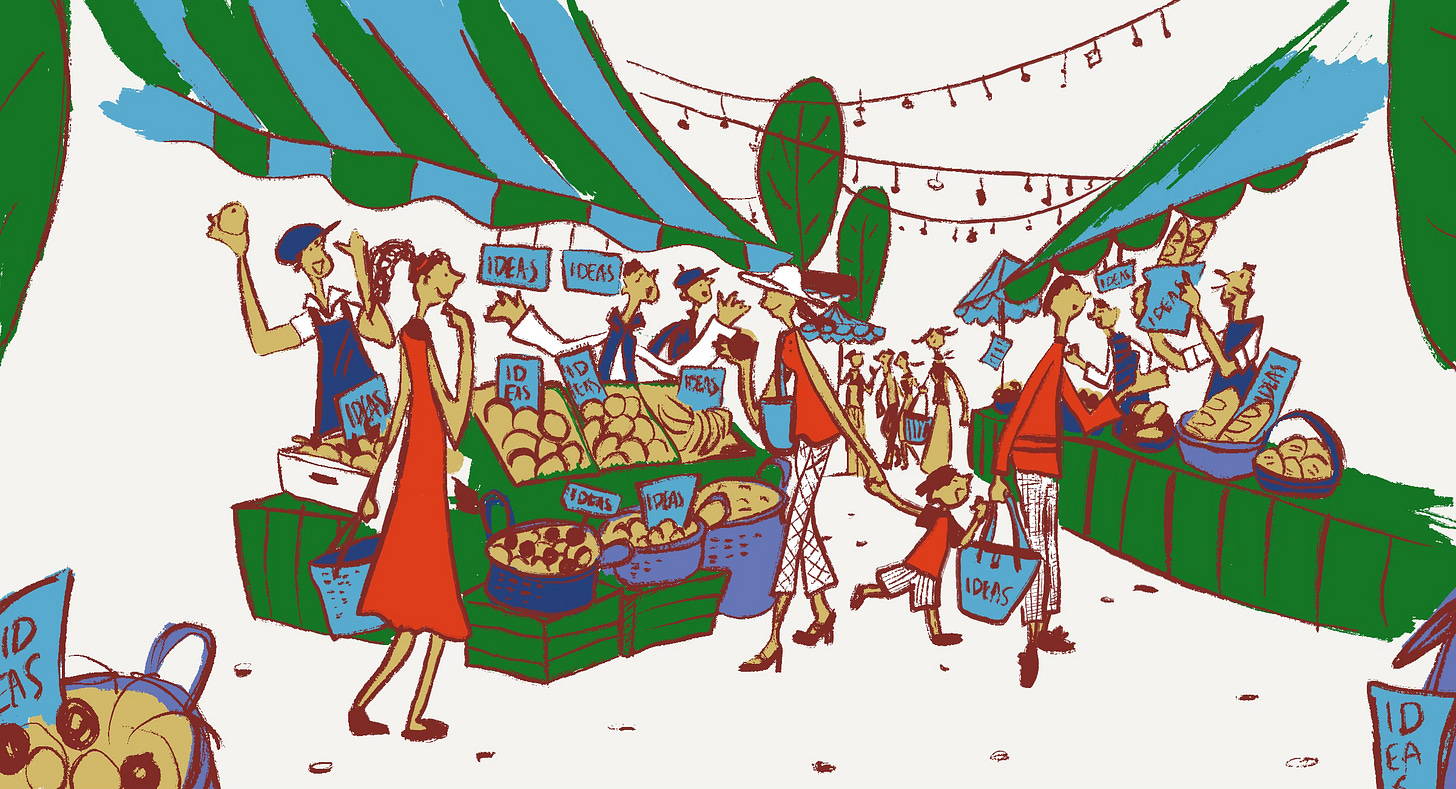What makes good ideas die, or live?
How to think about idea-based innovation in modern markets.
The ideas economy is a lens. A way of understanding how imagination becomes value, how creativity becomes currency, and how ideas — when activated by systems — become capital.
But ideas themselves are not capital. Not by default, anyway.
At best, ideas are pocketed, latent forms of capital. They hold the potential to be economically valuable, but only once activated — through the right timing, infrastructure, and social, financial, and cultural scaffolding. Without these, they remain inert.
And so, they require better context.
Whether an idea gets activated (economically, culturally, socially) depends almost entirely on context. This is often where advice on creativity falls apart. Much of it is not very helpful. Take the question we give to people who live out radical success stories; “how’d you do it?” As if success can be traced back to a recipe, roadmap, or some replicable method. It is so nuanced to the idiosyncrasies of one person’s character and life that it’s like asking a lottery winner for their numbers.
Ideas are born through unrepeatable collisions, of timing, geography, randomness, even birth order. What works for someone else mightn’t work for you, and what you will thrive in might only be tailored for you.
One of the biggest false dichotomies in modern thinking is between creativity and capital. Old school businesspeople might see culture as fluffy (modern businesspeople, not so). Creatives often have a complicated relationship with money altogether. Strategists become the designated translator between both. But the real magic is in the intersection.
Culture becomes powerful when it’s economically understood.
Capital becomes sustainable when it’s culturally fluent.
Strategy has integrity when it mirrors real-world complexity.
This is where Ideas Economy lives, in the wild west of the middle. Uncharted terrain between creative brilliance and economic structure. Where imagination meets real-world market dynamics. Where creativity is neither romanticised nor commodified but architected into something durable.
So, what makes good ideas die, and bad ones thrive?
There’s a survivorship bias baked into every startup success story. Pay no mind to the graveyard: the brilliant ventures that lacked timing, infrastructure, or resilience. The festivals that couldn’t outlast one wet season. The musician with world-class material but zero market pathways. Most ideas die. The ones that survive are anomalies. And just like you were born from a statistically absurd chain of generations, a successful idea is usually the product of thousands of uncontrollable variables aligning at once.
This doesn’t mean we shouldn’t study success.
It means we should study conditions.
Ideas themselves don’t scale, but infrastructure does. Across cities, I often see their creative economy stranded from mainstream markets. Creatives and thinkers might possibly exist in surplus. Raw imagination is abundant. But the capture mechanisms are often weak. And when a place appears to lack culture, it’s rarely an imagination problem. It’s almost always a systems problem.
The world isn’t short on ideas but on ideas infrastructure.
What does ideas infrastructure look like?
Cultural scaffolding,
financial fluency,
institutional pathways,
policy,
platforms,
social legitimacy,
distribution channels,
incentive systems.
These are ecosystems that enable imagination to convert into capital, at scale and over time.
What, then, is the ideas economy? A perspective. A way of seeing ideas as path-dependent assets:
Activated by timing,
shaped by context,
scaled by infrastructure,
and often killed by neglect.
This thought platform, Ideas Economy, exists to interrogate all of that. To explore how value is made, nurtured, or lost in the modern imagination economy. And to challenge the false binaries that keep creativity and capital at odds.



